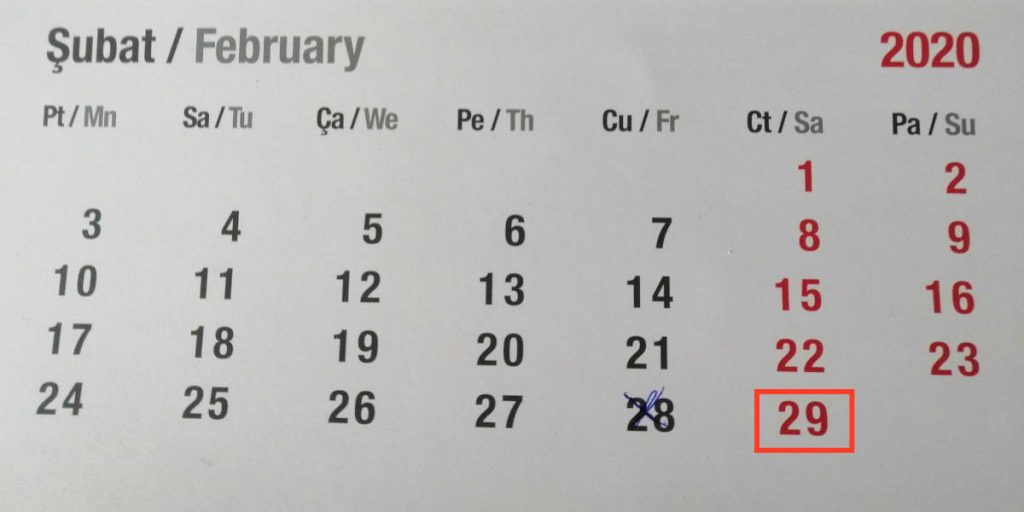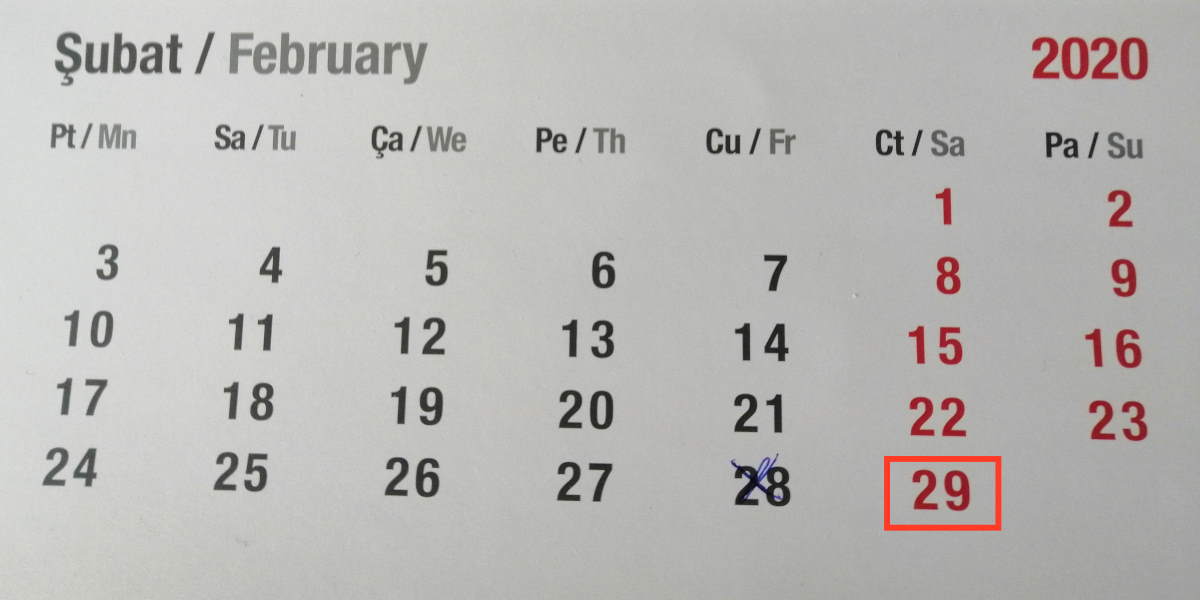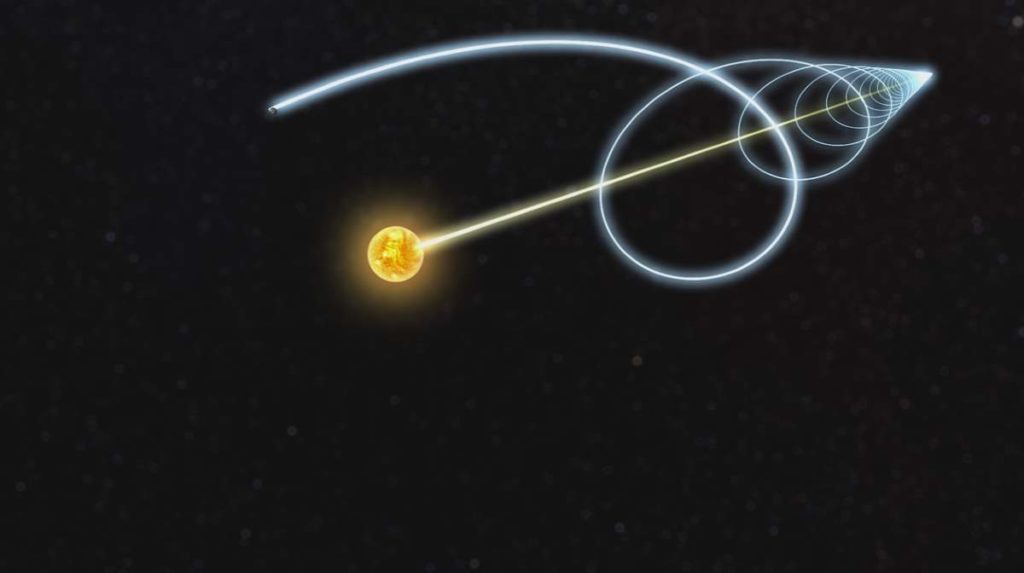Once (almost) every four years, we have a “leap year” which has 366 days instead of 365. Why it is like that? Why do we have leap years? JAXA (Former NASA Goddard) Planetary scientist Dr. James O’Donoghue (@physicsJ) explains why we have leap years in his latest video.
Please note that the Earth’s orbit is slightly elliptical. So its speed varies. Earth comes closest to the sun every year around January 3. It is farthest from the sun every year around July 4. So its orbital speed is slightly faster in January than in July.
The difference in distance between Earth’s nearest point to the sun in January and the farthest point from the sun in July is 3.1 million miles (5 million kilometers).
Earth’s orbital speed averages about 30 km/s (108,000 km/h or 67,000 mph).
What is a leap year?
Also known as an intercalary year or bissextile year, a leap year is a calendar year containing an additional day. It has 366 days instead of 365.
In the Gregorian calendar (the calendar used in most of the world, see notes 1), each leap year has 366 days instead of 365, by extending the month of February to 29 days rather than the common 28.
Why do we have leap years?

We have leap years because astronomical events do not repeat in a whole number of days. Earth completes an orbit around the Sun in 365.2422 days. So, a year is 365.2422 days long, not 365 days. It is called a tropical year (or a solar year). It is the time that the Sun takes to return to the same position in the cycle of seasons as seen from Earth.
A year (a solar year) is approximately 365 days, 5 hours, 48 minutes, and 45 seconds long.
If our calendar only had 365 days, over time, those dates would drift from the seasonal positions they used to occur. If we didn’t add leap days our seasons would drift approximately 7 days every 29 years. The month of August would be winter in a few hundred years in the northern hemisphere.
By adding a day in a year every four years, we try to compensate for these extra hours. That’s why we have leap years. There’s a February 29 (almost) every four years.
But still, there is a tiny error. We’re adding 6 hours every year instead of 5 hours, 48 minutes, and 45 seconds. As you can see in Dr. O’Donoghue’s video above, the year 2017 is approximately 0.24 days behind (not 0.25), the year 2018 is 0.48 days, and 2019 is 0.73 days behind. The year 2020 would be 0.97 days behind, but we’re adding 1 day to it. So it’s approximately 0.03 days ahead.
Those 0.03-day over-corrections build up every four years. Because of that tiny error, we skip adding a leap day every 100 years except when the year is divisible by 400. For example, there was no leap day in the year 1900, and there won’t be in the year 2100. But there was a leap day in 2000.
For further information, see the post titled “How Earth Moves“.
Leap year rules: how to calculate leap years
There are three criteria must be taken into account (in the Gregorian calendar) to identify a leap year:
- The year can be evenly divided by 4;
- If the year can be evenly divided by 100, it is NOT a leap year, unless;
- The year is also evenly divisible by 400. Then it is a leap year.
According to these rules, the years 1600, 2000.. etc were, and 2400, 2800… etc will be leap years, while 1800, and 1900 weren’t, and 2100, 2200, 2300, 2500, 2600… etc won’t be.
Why it is like that? Why do we skip a leap year every century unless the year is evenly divisible by 400?
By 1582, the Julian calendar (proposed by Julius Caesar in 46 BC) dates were ten days behind the seasons compared to where they used to be in Julius Caesar’s time.
The Catholic church wanted Easter to occur exactly when it used to one and a half-millennium ago. Astronomers at the time realized that if leap days pushed the calendar too far behind the seasons. We would need just three fewer leap days every four centuries. Hence rule three.
This new calendar is called the Gregorian Calendar (see notes 1).
To deal with the 10 days difference (between calendar and reality) that this drift had already reached, the date was advanced so that 4 October 1582 was followed by 15 October 1582.
The Gregorian Calendar still isn’t perfect: its imperfection causes dates to become one day off from the seasons every 3,216 years.
Is 2024 a leap year?
Yes, 2024 is a leap year because it is divisible by 4, which is the basic rule for leap years. Additionally, although years divisible by 100 are not leap years, 2024 is exempt since it is not a century year.
Notes
1. Gregorian Calendar
The Gregorian Calendar is named after Pope Gregory XIII (7 January 1502 – 10 April 1585) who introduced it in October 1582.
It was developed as a correction to the Julian calendar (proposed by Julius Caesar in 46 BC), shortening the average year by 0.0075 days to stop the drift of the calendar with respect to the equinoxes.
Sources
- What Is a Leap Year? on the Time and Date website
- Leap Year on Wikipedia
- Perihelion on Wikipedia
- How Many Elephants are Left in the World in 2025? - August 17, 2025
- Moon Landings: All-Time List [1966-2025] - February 2, 2025
- What Is Max-Q and Why Is It Important During Rocket Launches? - January 16, 2025

